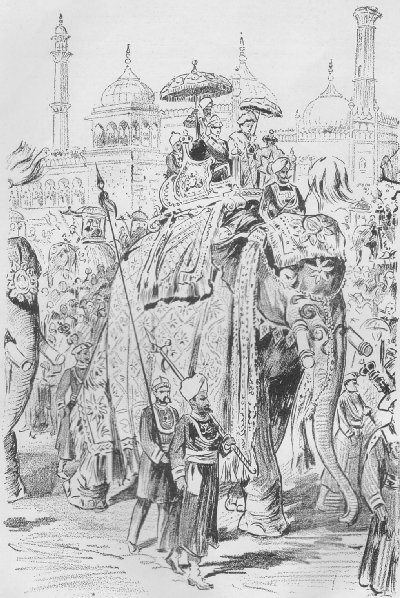|
The Coronation Durbar at Delhi, India, in January, 1903, was in some ways the most imposing ceremonial of this generation. The Viceroy made his state entry into Delhi on Monday, and the grand Durbar on Thursday, in honor of the accession of Edward VII., formed the climax of the gorgeous pageant. Down the Chandni Chowk, the "Silver Road," which is the grandest of Indian streets, streamed a procession in which Were included all the white rulers of India, and nearly every Indian Prince of sovereign rank, Holkar and the Gaikwar being the only two important exceptions. All rode, as beseemed a grand Asiatic celebration, upon elephants, and every elephant carried a gold or silver howdah, often flashing with gems, and was clothed in cloth of gold or silver, which under that sky shone as in Europe even gold and silver cannot be persuaded to shine. The Englishmen were, off course, in the fullest uniform, and the princes, with the single exception of the Nizam, who was dressed in plain black, displayed those wonderful robes, so seldom seen even in the East,—robes blazing with gold and gems, and embroideries almost more costly still. Everything was on a scale which impresses the Asiatic mind —elephants in endless lines, soldiers in armies, retinues in tens of thousands and myriads of delighted people, all assembled to hail in Asiatic fashion the accession of their British lord. There was but one distinctively Western feature in the whole display. Beside the Viceroy in the same howdah, sat Lady Curzon, beside the Duke of Connaught, the King's brother, and his Duchess, a thing not seen in Indian since Alexander retreated from the Punjab.
THE GREAT PYRAMIDS |
